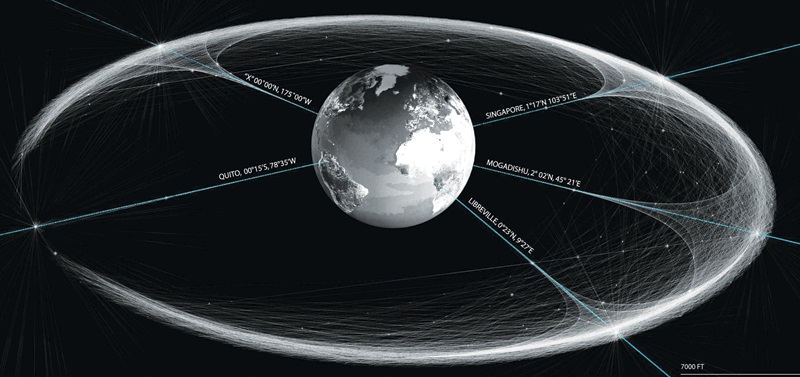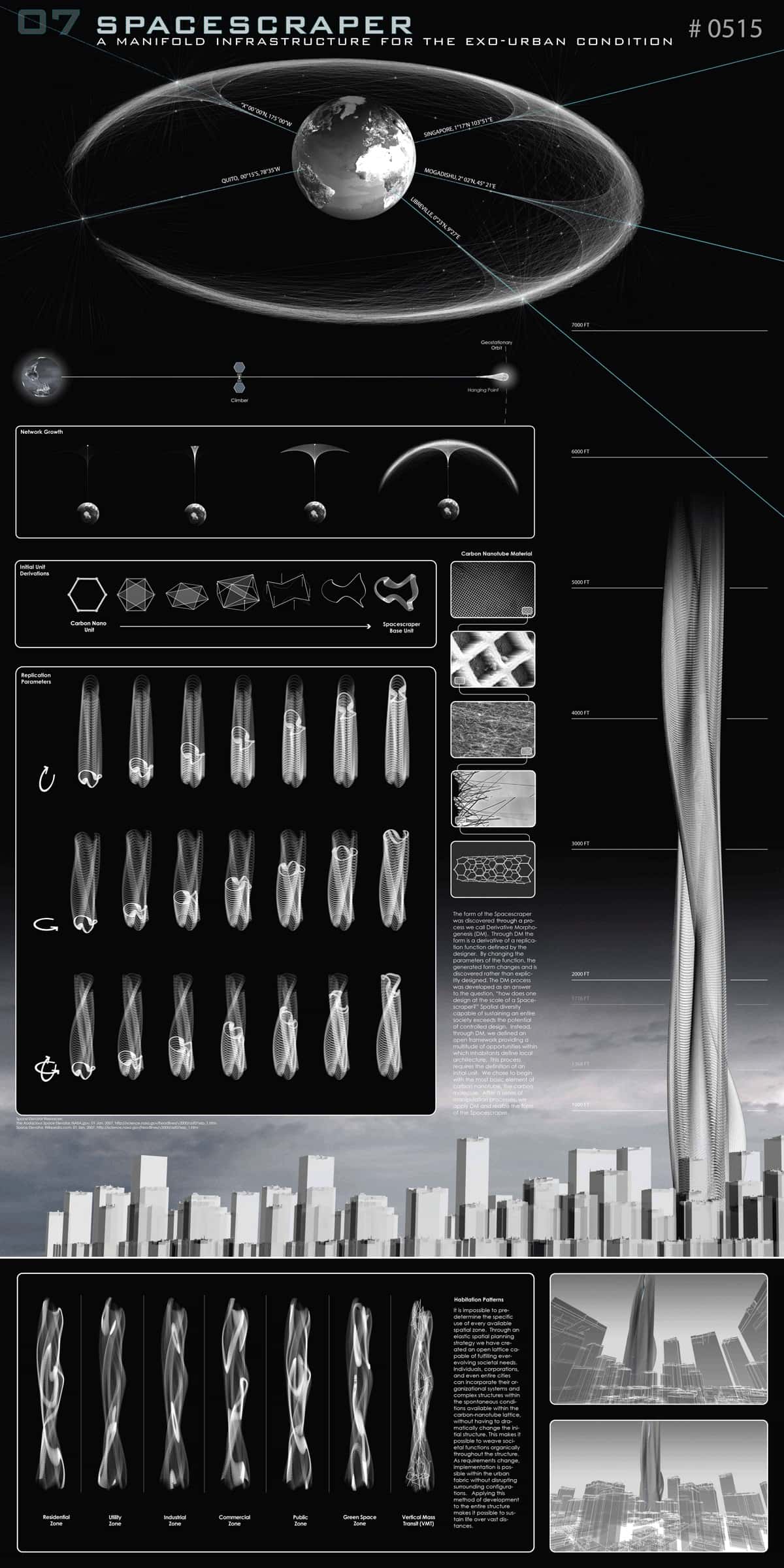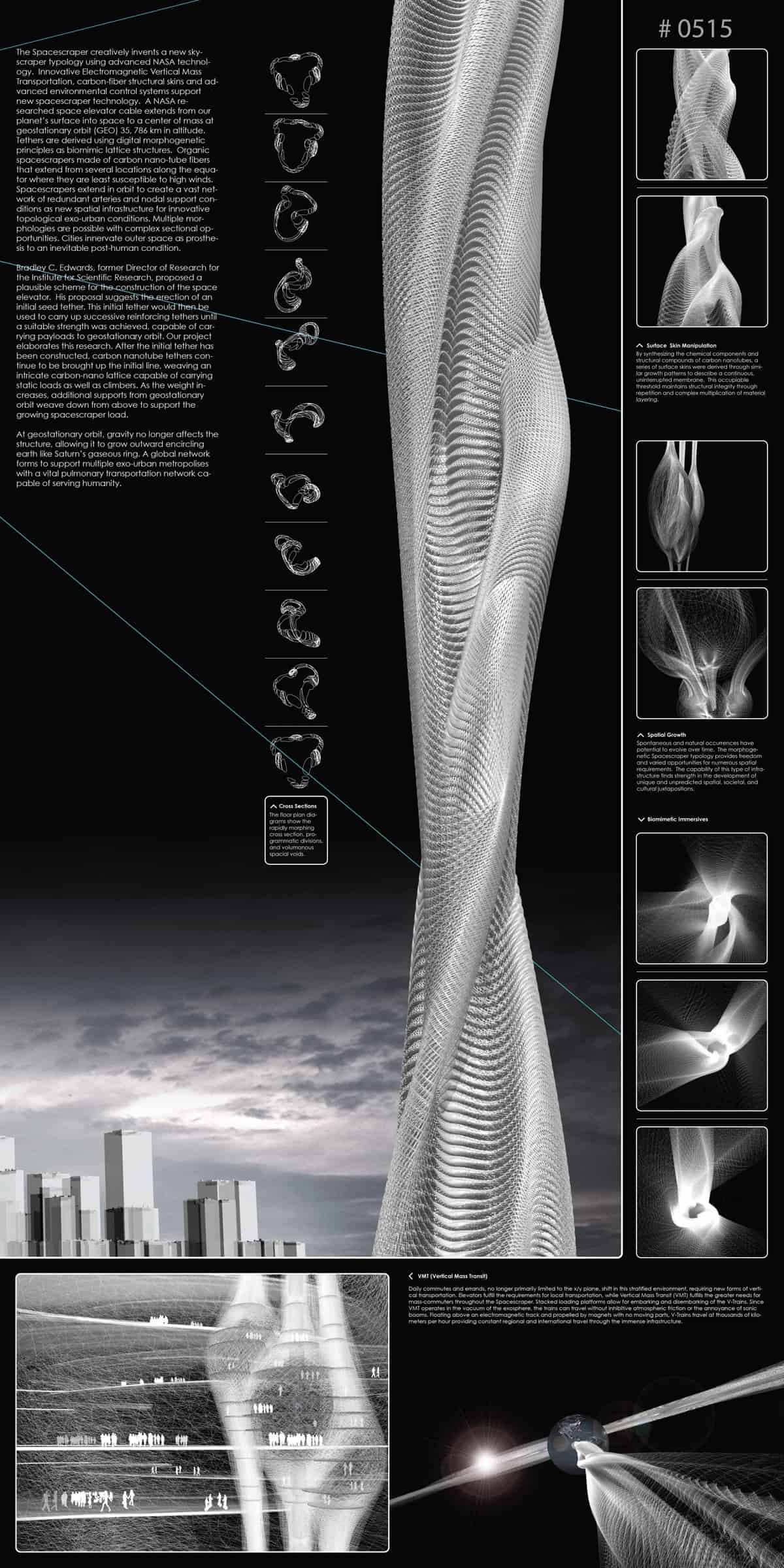Special Mention
2007 Skyscraper Competition
Richard Porter, Chris Allen, Cam Helland, Stephen Phillips
United States

Spacescraper creatively invents a new speculative world structure with advanced NASA technology that expands urbanity into outer space. Innovative photovoltaic elevators, powered by lasers, carbon nanotube fiber structures, and advanced environmental control systems, support an extensive universal cable system that houses societal needs on mass scale. Space for individuals, corporations, and entire cities grow to organize within Spacescraper’s continuous exoskeletal form. Derived through a series of digital scripting explorations initiated alongside study of carbon molecular structures, Spacescraper performs as a habitable biomimetic network tethering the Earth’s atmosphere.
As skyscrapers are historically governed by vertical transport systems (elevators), structural materials (steel) and environmental controls (heat and air-conditioning), Spacescraper proposes to exploit Director Bradley C. Edwards’ study at the Institute of Scientific Research for an innovative “space elevator” system. Edwards supposed scientifically that a structural tether could be extended in tension from a satellite (or a meteor) set with a center of mass at geostationary orbit (GEO), 35, 786 km–high above the Earth’s surface. Positioned at GEO, gravity does not affect the satellite supporting the tether, and as the tether extends from the equator, it is least susceptible to high winds.
In consultation with astro-physicists at Caltech, Spacescraper elaborates Edwards’ vision to propose a complex tethering system that uses lightweight carbon nanotube fibers weaved together with structural truss patterns similar to those formed by porifera (sponges). Pre-tensioning the carbon nanotube tethers against the rotation of the Earth increases cable strength, and by adding a series of smaller tethers held-up in tension to numerous satellites positioned at GEO, Spacescraper’s extraterrestrial infrastructure achieves equilibrium.
Suspending a futuristic “City-in-Space”, Spacescraper naturally grows over time from individual satellite cities to encircle the Earth like a gaseous Saturnine ring. Base towers extend into orbit from several locations along the equator to create a vast series of redundant arteries and nodal support systems. Vital transport consists of local elevators with mass transit lines and hubs that run throughout the orbital network connecting multiple metropolises. Within the twisting overlapped spaces of its complex vertical sections, Spacescraper provides for multiplicity as a new exo-urban megalopolis emerges to innervate outer space as prosthesis to our inevitable posthuman condition.
Spacescraper was formed through mutual collaboration between Stephen Phillips of Stephen Phillips Architects (SPARCHS) and recent Cal Poly architecture graduates and design interns Chris Allen, Cameron Helland, and Richard Porter.


This work is licensed under a Creative Commons License permitting non-commercial sharing with attribution. https://creativecommons.org/licenses/by-nc-nd/4.0/



